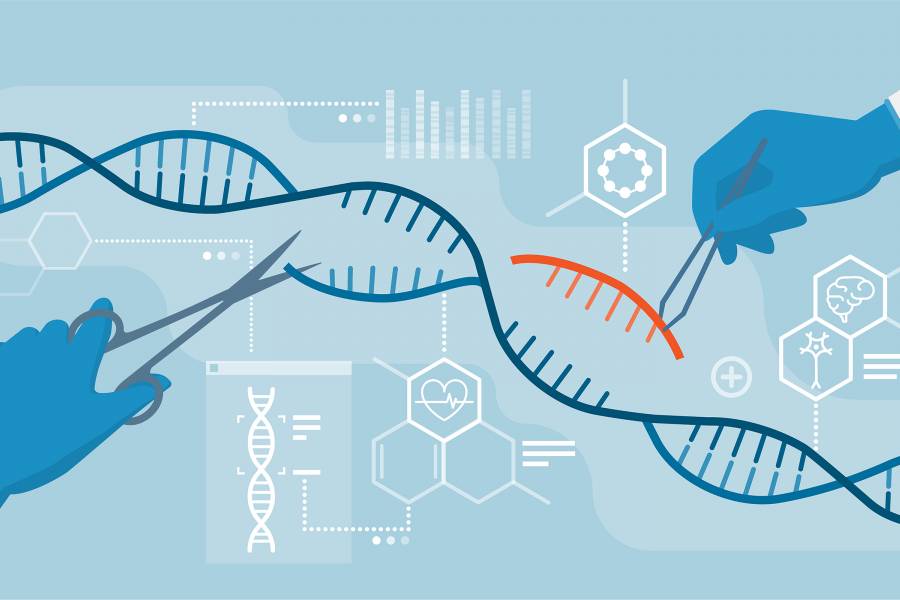The extent of biotechnology, gene editing, & CRISPR-Cas9:
Image credits: (https://hub.jhu.edu/2021/01/29/crispr-cas9-gene-dimmer/https://hub.jhu.edu/2021/01/29/crispr-cas9-gene-dimmer/)
(Abstract) Biotechnology is fascinating; we can see this being used in the fields of health care. More specifically, gene editing is utilized to edit & manipulate parts of genetic material to enhance, alter, or repair the function. Parts of genes are spliced together to perform this function. Throughout the years, genetic engineering has advanced and thus its ethics has been questioned for its now-various uses, one of which is the use of virus/bacteria engineering. Nowadays, genetic engineering has become so accessible that even kits are readily available for purchase on sites such as Amazon. What newfound innovations & consequences has this age of scientific advancement brought, yet again?
Every living organism’s characteristics are determined by genes. Genes are arranged (from the four nitrogen bases) as the building blocks to DNA, and they can be manipulated and changed using gene editing such as CRISPR. CRISPR (short for clustered regularly interspaced short palindromic repeats) uses a natural function found in bacteria and archaea which utilizes Cas-proteins (CRISPR associated proteins). When a virus invades an unicellular organism such as bacteria, Cas proteins cut a segment of the viral DNA, which is copied to a RNA that binds to a special Cas protein called Cas9. The Cas9 can then detect when the same virus invades and destroy said virus. CRISPR can be hijacked to target not just viral DNA but almost all organisms, hence making CRISPR-Cas9 a gene editing tool.
The ability of CRISPR to fix DNA errors can potentially lead to advancements such as treatments for genetic diseases, create altered traits in organisms, & lead to advanced cell editing. CRISPR also allows for scientists and researchers to study genomes to see what traits change when genes are edited & manipulated. With the availability and accessibility of CRISPR & gene editing in the modern years, clear consequences have been made clear. This can be seen with how easily genomes can be obtained and edited, in an inexpensive and easy fashion. When in the wrong hands, this can lead to pathogens such as viruses to be easily edited and distributed, causing potentially globally devastating effects. In addition to this, the advancements of CRISPR raise a lot of ethical questions and issues, especially with experimental animals.
With innovations such as CRISPR, new opportunities are opened for the field of STEM. The benefits and harms of genetic engineering are still being debated, and CRISPR continues to be changing and evolving.
Citations/Related Articles:
“CRISPR.” Wikipedia, Wikimedia Foundation, 7 Dec. 2021, en.wikipedia.org/wiki/CRISPR.
“CRISPR/Cas9.” CRISPR, www.crisprtx.com/gene-editing/crispr-cas9.















